Hear from world-leading energy researchers at the first Australian Pulsed Power Workshop (AusPPW).
Explore Pulsed Power and its applications across food processing, decontamination, mining and dewatering systems, and biomedical engineering through interactive virtual workshops.
This two-day event is open to industry professionals and students and includes panel discussions and speakers from a broad range of disciplines.
What's on
Day 1: Speakers
9am–5pm
Day 2: Workshops
9am–12:30pm
Registration
Registration opens July 2021.
Pulsed Power at UQ
Learn more about Pulsed Power research at UQ.
Venue
Speakers
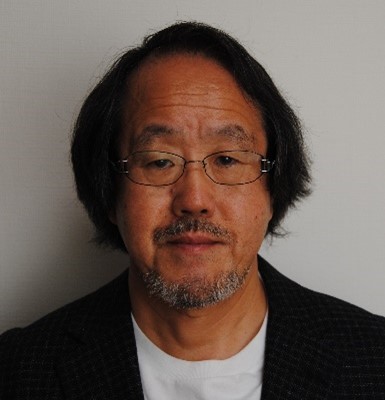 Professor Hidenori Akiyama
Professor Hidenori Akiyama
Kumamoto University, Japan
Speaker biography: Professor Hidenori Akiyama received his Ph.D. degree from Nagoya University (Nagoya, Japan) in 1979. He was a Research Associate in Nagoya University from 1979 to 1985. In 1985, he joined Kumamoto University (Kumamoto, Japan) as a member of the faculty; he is a Professor Emeritus of this university. Read more.
Topic: Industrial Application of Pulsed Power
Abstract: Pulsed power generators have been developed with military research and became larger and larger in the size of pulsed power generators. Sandia National Laboratory’s Z Machine, the biggest pulsed power generator in the world, has stored energy capabilities of 20 MJ, and has about 33 m in diameter. On the other hand, development of high repetitive and maintenance-free pulsed power systems continues to expand industrial applications. Such systems need moderate output power, comparatively small size, and high-functioning pulsed power. Pulsed power is supplied to gases, liquids and solids. The pulsed power with a large pulse current and voltage is used directly for applications; the pulsed power produces non-thermal or thermal plasmas used for application; non-thermal or thermal plasmas produce shock waves or OH used for applications. The thermal plasma is used for applications such as nuclear fusion and recycling of plastic plated with metal and concrete using pulsed power. Non-thermal plasma is most frequently employed in the bioelectrics field, which is a new field encompassing both the science and technology of pulsed power biological systems. Here, we present mainly comparatively new industrial applications as follows: sterilization by a large volume discharge plasma, treatment of algae in dam by shock waves, removal of core sand of engine (cylinder head) by shock waves, new cooking appliance using pulsed power.
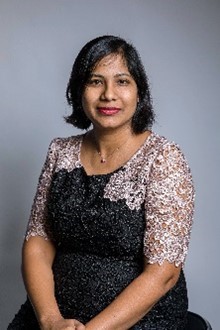 Dr Nidhi Bansal
Dr Nidhi Bansal
School of Agriculture and Food Sciences, Faculty of Science, The University of Queensland, Australia
Speaker biography: Dr Nidhi Bansal received her Ph.D. degree in Food Chemistry from University College Cork, Ireland in 2007. She is currently an Associate Professor in the School of Agriculture and Food Sciences, The University of Queensland (UQ), Australia. Read more.
Topic: Application of PEF for milk and liquid food processing
Abstract: Achieving microbiological safety while maintaining bioactivity for extended storage periods is a huge challenge for dairy-based systems. Conventionally, heat (e.g. as LTLT pasteurisation or UHT sterilisation) is applied to reduce microbial activity while enhancing shelf life. However, heat treatments invariably result in the loss of heat-labile bioactive molecules inherently present in milk. Major bioactive factors in milk include immunoglobulins, lactoferrin and α-lactalbumin, as well as other antimicrobial proteins; enzymes such as xanthine oxidase, lactoperoxidase, lysozyme and lipase; vitamins and trace elements etc. Studies of conventional PEF have failed to achieve an optimal solution because maintaining low temperature with the technology is challenging. We have applied an innovative technological solution to this problem using nsPEF. In our static nsPEF trials, we have optimised properties (such as magnitude and repetition frequency) of nanosecond pulses to achieve an energy flux producing a microbial safety equivalent to conventional pasteurisation, but at much lower heat gain. Results of nsPEF trials showed a 3-4-log reduction in microbiological load (>99.9% reduction), while retaining a significant proportion of the activity of bioactive compounds. The temperature of the samples was maintained below 40°C. Similar microbiological reductions were achieved in other liquid foods, such as juice.
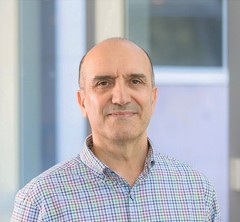 Dr Mansour Edraki
Dr Mansour Edraki
Associate Professor, Centre for Mined Land Rehabilitation (CMLR), Sustainable Minerals Institute, The University of Queensland, Australia
Speaker biography: Dr Edraki is a leading expert in environmental geochemistry applied to mine waste and mine water management. He has more than 20 years of experience in leading research projects for the mining industry and is currently leading the Environmental Geochemistry Group at UQ's Sustainable Minerals Institute. Read more.
Topic: Applications of Pulsed Power Technology for Sustainable Management of Mine Waste and Mine Water
Abstract: Mining contributes to the livelihood of societies by creating jobs and providing raw materials to drive advancements in science and technology. It would be hard to imagine life in the 21st Century without smart phones, electrical networks, medical diagnostic instruments, and fast modes of transport. However, mining also comes at a cost to the environment and society. With increasingly lower grades and higher tonnages of ore mined, billions of tones of mineral processing tailings are produced each year globally. The hazards of tailings include catastrophic failure of tailings storage facilities and the potential dispersion of contaminants into the environments through airborne ad aquatic pathways. To maximise the opportunities from mining and eliminate potential impacts, the resources industry is investing heavily in innovative interdisciplinary solutions for better management of mine waste and mine water. Pulsed Power offers an exciting opportunity for dewatering mine tailings. A pulsed electric field with a high frequency is used to liberate water bound within or to the mineral component of the mineral tailings. In this presentation, preliminary results on diamond slimes will be discussed and the current research on coal tailings will be introduced against the backdrop of electrokinetic theory.
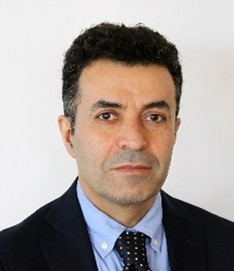 Professor Hamid Hosano
Professor Hamid Hosano
Institute of Industrial Nanomaterials, Kumamoto University, Japan
Speaker biography: Professor Hamid Hosano received the Ph.D. degree in Aerospace Engineering from Tohoku University, Sendai, Japan, in 1999. He was a Lecturer at Sharif University of Technology, from 1990 to 1996. Read more.
Topic 1: Drug/gene delivery by pulsed power: From pulse electric fields (PEFs) to pulse ultrasound
Abstract: Among different biological, chemical, or physical stimuli for cell manipulation, physical stresses are of particular interest, as they can transiently increase the permeability of the cell membrane. Recent progress in nanosecond duration ultra-high voltage pulses provides exciting possibilities to produce direct intracellular effects. Meanwhile, we have been using ultrashort pulses to generate fine micro underwater shock waves, which can penetrate deep in soft tissue. These unique characteristics make them appropriate for delivering mechanical/electrical energy for DNA/drug delivery and/or cancer ablation. Ultrasound and shock wave can be applied through totally non-invasive procedures taking advantage of focusing in soft tissue; appropriate for clinical therapy. The lecture will cover our experiences with these minimally invasive cell permeabilization procedures, which offer interesting cost-effective methods with minimum side effects for drug/gene delivery.
Topic 2: Recycling and extraction with pulsed power: Challenges and prospects
Abstract: Consumption of fossil fuel produces CO2, which cause global warming that recently considers as a major problem in the world. Biofuel production as a sustainable source of green energy is considered as promising complements to petroleum in order to prevent environmental problems. In this regard, microalgae can be one of the best options since other plant resources may be used for human consumption. However, there are several challenges to extract oil from microalgae, e.g., high energy consumption, chemical solvents, and algae culture destruction; which are addressed by new pulsed power approaches. Another environmental issue that we are facing is electronic-waste. E-waste recycling is far below what it should be to reduce its impact on the environment and human health simply because it is not economically feasible. We have been working on a way to change that using pulsed power technology.
 Dr Chunqi Jiang
Dr Chunqi Jiang
Associate Professor, Old Dominion University, USA
Speaker biography: Chunqi Jiang received her BS (1995) from the Changchun Institute of Optics and Fine Mechanics, China, her MS (1998) from the University of Electronic Science and Technology of China, and her PhD (2002) from Old Dominion University (ODU), USA. Read more.
Topic: Repetitive Nanosecond Pulse Power for Plasma Ignition for Combustion and Plasma medicine
Abstract: Repetitive nanosecond pulse power is known for energy efficient and effective applications in many diverse fields including energy, environment, agriculture, and medicine. This talk provides two particular examples where transient plasmas driven by nanosecond high voltage pulses are used to achieve efficient, lean-fuel ignition for combustion and controlled oxidation-reduction chemistry for medical applications such as cancer therapy and plasmid DNA delivery. For the plasma ignition for combustion, 10-ns high voltage pulses having the same peak voltage was found beneficial to achieve higher peak pressure, shorter ignition delay or lower energy requirement for ignition when the voltage pulse has a shorter rise time and optimal pulse repetition frequency (PRF). For plasma medicine, controlled delivery of reactive oxygen and nitrogen species (RONS) to the treatment cite in modulated quantities and concentrations is essential to the application success, killing tumor cells while avoiding adverse effects on surrounding normal tissue or assisting plasmid DNA delivery to skin without causing permanent damage to the tissue. Repetitive nanosecond pulse power offers great flexibility to the plasma jet for a wide range of RONS generation in the gas-liquid interface, cell suspension and on the surface of skin by tuning a matrix of power parameters.
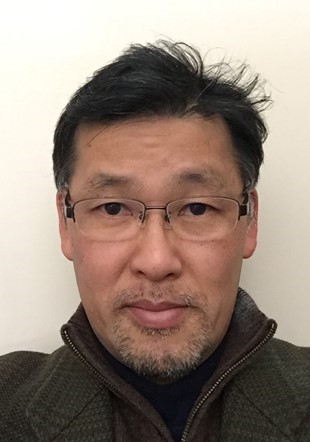 Professor Sunao Katsuki
Professor Sunao Katsuki
Institute of Pulsed Power Science, Kumamoto University for Education, Japan
Speaker biography: Professor Sunao Katsuki received his PhD degree from Kumamoto University in 1998. between 1998-2007, he has been an Associate Professor at Department of Electrical Engineering and Computer Science, Kumamoto University. Read more.
Topic 1: Primary impacts of pulsed electric fields on cells and proteins
Abstract: Pulsed electric field (PEF) primarily impacts phospholipid cell membrane and giant biomolecules such as nucleic acids and proteins, which have electrical charge distribution in them. PEF accumulates electrical charges on the cell membrane so that the transmembrane field is enhanced to the order of 1 MV/cm, which breaks down and permeabilizes the membrane. Also, an extremely large PEF causes intra- and inter-molecular stresses in giant biomolecules, which eventually result in their structural and functional changes. Especially, membrane proteins, which interface intracellular to extracellular regions, are exposed to such an extremely large field exceeding 1 MV/cm during the exposure to even relatively low PEF. Here, the primary impacts of PEF on cells are discussed on the basis of several experiments using artificial cells and protein solutions as well as mammalian cells and bacteria.
Topic 2: Industrial scale PEF treatment system for pasteurization of protein-rich liquid foods
Abstract: Pulsed electric field (PEF) is a nonthermal physical agent that selectively damages the specific object which has a membrane in a liquid, i.e., the microbe. Therefore, it is useful as a sterilization process of the protein-rich liquid food and other heat-sensitive liquid materials. There has been a number of experiments that demonstrated the positive bactericidal effect of PEF, most of which, however, used batch processes or low volume continuous flow systems. Here, we discuss key component technologies for the large scale PEF treatment system for industrialization, including high-volume liquid flow system, PEF exposure chamber and highly repetitive pulsed power generator on the basis of the basic study of thermal hydraulics in the fluid exposed to the repetitive PEF.
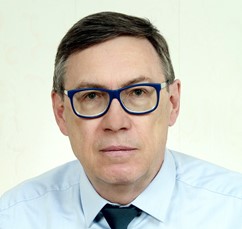 Professor Victor Nikonenko
Professor Victor Nikonenko
Kuban State University, Krasnodar, Russia
Speaker biography: Professor Victor Nikonenko graduated from the Mathematical Faculty of the Kuban State University; defended his Doctor of science thesis at the A.N. Frumkin Institute of Electrochemistry of Russian Academy of Sciences (1996) and his HDR thesis at the Paris-Est University (2001). Read more.
Topic: Improving the performance of electrodialysis separation by using pulsed electric field
Abstract: Electrodialysis (ED) is an electrically driven membrane process used for demineralization and concentration of electrolytes, separation of different ionic species, electric energy generation and the solution of numerous other issues in chemical and agro-food industries, medicine etc.. There are two important factors reducing the scale of ED applications: concentration polarization, leading to relatively low ionic fluxes and other unwanted effects, and membrane fouling (undesirable deposition of material on membrane surface). Application of Pulsed Electric Field (PEF) results in mitigation of both problems. This presentation provides an overview of recent literature and some of our own results regarding the theory and applications of PEF in ED. The most commonly used mode of PEF is when a constant electric current (or potential difference) across a stack of ion-selective membranes (pulse) alternates with a time of zero current (pause). During the pause, the concentration gradients formed during the pulse partially dissipate, which reduces the risk of deposit formation and water splitting leading to pH changes. The reduced electric resistance allows high ionic fluxes, when a new pulse is applied. Numerous authors have proven the reduction in membrane fouling. However, the effect of PEF on the specific ionic fluxes is not so unambiguous. The optimum frequency range is from 0.01 Hz to 100 Hz, depending on the target effect.
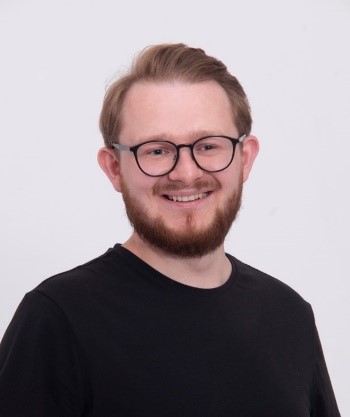 Dr Aurtur Wiktor
Dr Aurtur Wiktor
Assistant professor, Department of Food Engineering and Process Management, Institute of Food Science, Warsaw University of Life Sciences, Poland
Speaker biography: Dr Artur Wiktor is a specialist in the field of food engineering, including primarily the use of pulsed electric field to support unit processes. Read more.
Topic: Drying enhancement by pulsed electric field (PEF) application
Abstract: Drying is one of the most popular food processing techniques. Its progress is limited mainly by the cellular structure of most of plant and animal origin food. Therefore, it can be intensified either by change of the processing parameters or an introduction of a pre-treatment. Conventional operations involve mechanical disintegration or thermal treatment, and they are associated with many drawbacks. The application of PEF causes electroporation which, in simplification, can be described as electrically induced perforation of the cell membrane. PEF treatment improves the moisture transfer from material to the surroundings which manifests as an increase of the effective water diffusion coefficient and reduction of drying time. The application of PEF prior to drying impacts not only the kinetics of the process but also the quality of the dried material. The effect of PEF depends strongly on the parameters of pre-treatment, drying, on matrix itself and on the studied property. The utilization of PEF as a pre-treatment is an interesting and unique approach. It allows the process kinetics to be enhanced and the quality to be improved without significant negative impact on bioactive compounds or nutritional quality of many different food matrices.
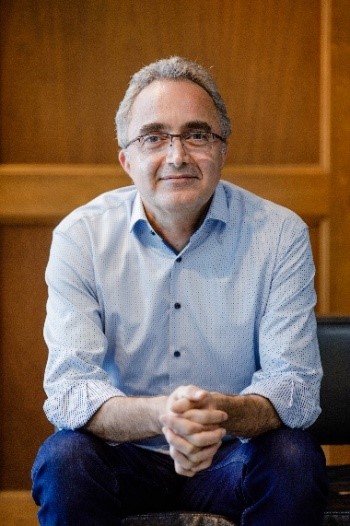 Professor Firuz Zare
Professor Firuz Zare
School of Information Technology and Electrical Engineering, Faculty of Engineering, Architecture and Information Technology, The University of Queensland, Australia
Speaker biography: Professor Firuz Zare is a Fellow of IEEE, Power Electronics Professor and a discipline leader of Power, Energy and Control Engineering at the University of Queensland in Australia. Read more.
Topic: Modern Power Electronics Technology in Pulsed Power Applications
Abstract: Pulsed power systems deliver energy over very short durations, resulting in huge peak powers released in the form of pulsed electromagnetic waves, plasmas, shock waves, radicals and light. The pulse signal has different parameters: polarity, magnitude, pulse width, frequency and rise and fall time. New ultra-fast switching developments mean that equipment is becoming available where nanosecond pulse widths are possible. Technological limitations to generate ultra-fast high voltage pulsed power signals still remain with respect to the development of next-generation Wide Band Gap semiconductor devices and new high voltage topology and control. The extension of pulsed power converter design and control to the development of sub-nanosecond pulsed power converters at large-scale systems would be the first time this has been done in the world.
Student: AUD $300
Non-student: AUD $600
Ticket price includes access to all virtual sessions.
